62吨大树、大型类人猿……这些是2018十大新物种
|
62吨重的濒危大树、美国加州圣地亚哥水族馆里发现的原生动物、濒临灭绝的大型类人猿,这都是入选第11届年度十大新物种榜单的神奇生物。 该榜单由纽约州立大学环境科学与林业科学学院旗下物种考察国际研究所(IISE)编制,每年5月公布,以纪念瑞典生物学家卡尔·冯·林奈的诞辰。林奈被誉为现代生物分类学之父,加州大学伯克利分校表示,“他对生物的命名、排序和分类系统至今仍在广泛使用(有一些改进)。” 包括植物、细菌、鱼类和接近灭绝的哺乳动物在内,每年IISE评选的十大物种只是部分代表,由跨国甄选委员会从新物种之中挑选。 “每年命名约1.8万个(物种),但估计每年至少有2万个物种灭绝。”IISE的创始董事、纽约州立大学环境科学与林业科学学院院长昆汀·惠勒在声明中表示。 惠勒称:“有很多物种如果找不到,及时命名并描述,将永远不为人知。通过各种新物种我们才能明白到生态系统有多么复杂,从中了解生物演化的具体情况。面对生存竞争、环境和气候条件的不断变化,每个物种都在顽强生存。由于人类也面临充满不确定的未来环境,可以通过这些例子学习一些经验。” 接下来,就让我们来认识一下今年的十大物种: |
An endangered 62-ton tree, a protist found in an aquarium in San Diego, an “imperiled” great ape: These are just three of the fascinating new species to make the 11th annual Top 10 New Species List. The list is compiled by the International Institute of Species Exploration, which is part of State University of New York’s College of Environmental Science and Forestry, and it is released in May each year to honor Carolus Linnaeus’s birthday. Linnaeus is known as the “Father of Taxonomy,” and according to the University of California, Berkeley, “his system for naming, ranking, and classifying organisms is still in wide use today (with many changes).” The top 10 organisms — plants, bacterium, fish, and even extinct mammals — are just a sampling of new species discovered, and they are chosen by members of an international selection committee. “We name about 18,000 [species] per year but we think at least 20,000 per year are going extinct,” Quentin Wheeler, ESF president and founding director of the IISE, said in a statement. “So many of these species — if we don’t find them, name them and describe them now — will be lost forever,” Wheeler continued. “And yet they can teach us so much about the intricacies of ecosystems and the details of evolutionary history. Each of them has found a way to survive against the odds of changing competition, climate and environmental conditions. So each can teach us something really worth knowing as we face an uncertain environmental future ourselves.” Here are the top 10 species: |
1. Ancoracysta twista
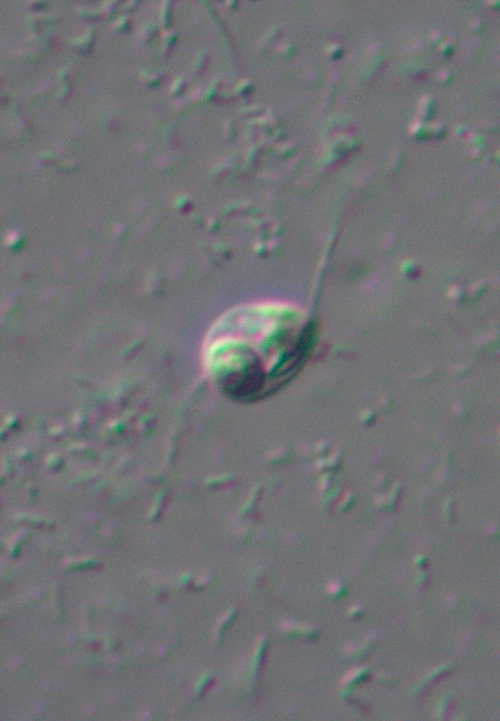
|
Ancoracysta twista是一种新发现的单细胞原生生物,发现地在圣地亚哥海洋研究所Scripps Institution of Oceanography的一个热带水族馆。目前尚不清楚起源何处。 |
Ancoracysta twista is a new single-celled protist, which was discovered in a tropical aquarium at the Scripps Institution of Oceanography in San Diego, Calif. Its origins in the wild remain unknown. |
2. Dinizia jueirana-facao
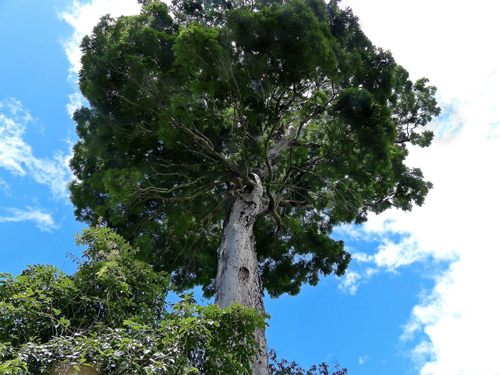
|
Dinizia jueirana-facao 在巴西发现,是极度濒危的一种树。目前这种树在全球只发现了25棵(其中一半都在保护区内),可以长到130米高,重约62吨。 |
Dinizia jueirana-facao is a critically endangered tree that is found in Brazil. There are only 25 known trees (half of which are in a protected area). It can be up to 130 feet tall and weigh around 62 tons. |
3.Quasimodo侧甲钩虾
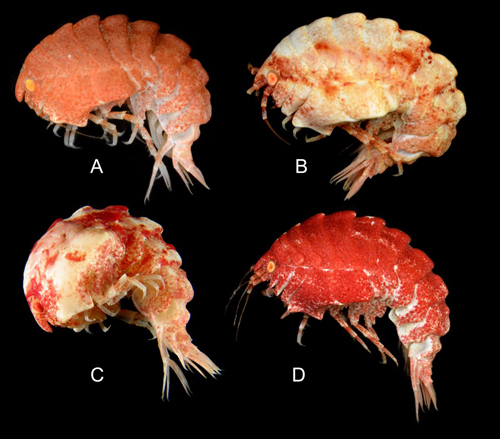
|
可能你已经猜到,Epimeria quasimodo 得名于法国文豪维克多·雨果在《巴黎圣母院》中的驼背主人公卡西莫多,因为同样弓着背。环境科学与林业科学学院称,这是南极洲海域新发现的26个侧甲钩虾属片脚类物种之一。 |
As you may have guessed, Epimeria quasimodo was named after Victor Hugo’s hunchbacked character Quasimodo, because of its shape. According to ESF, it is one of “26 new species of amphipods of the genus Epimeria from the Southern Ocean.” |
4. Nymphister kronaueri

|
这种小甲虫生活在哥斯达黎加,16只叠在一起才有约2.5厘米长。它们寄居在工蚁背上,大小、形状和颜色都和工蚁的腹部相同,骑在工蚁背上旅行。环境科学与林业科学学院发布的文章解释说:“这种甲虫利用口器抓住宿主腹部比较紧的表面然后挂住,跟着蚂蚁从一处移动到另一处。” |
These tiny beetles live in Costa Rica, and it would take 16 of them lined up to reach the length of an inch. They live amongst a species of worker ants and hitchhike on the back of the ants to travel — their bodies are the same size, shape and color of the ants’ abdomen. “The beetle uses its mouthparts to grab the skinny portion of the host abdomen and hang on, letting the ant do the walking as they move from place to place,” an ESF release explains. |
5.Pongo tapanuliensis
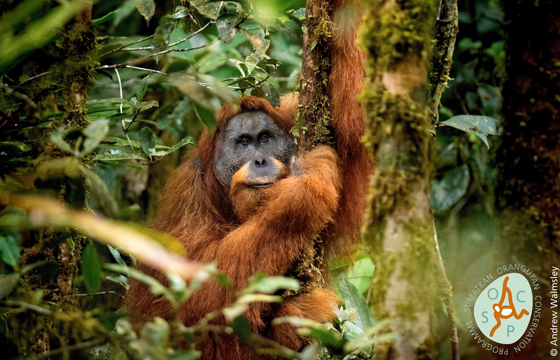
|
Pongo tapanuliensis又名tapanuli orangutan,是一种居住在苏门答腊岛的濒危大型类人猿,目前全球仅剩800只。 |
Pongo tapanuliensis, or the tapanuli orangutan, is an endangered great ape that lives in Sumatra. There are only around 800 of them left. |
6.Pseudoliparis swirei
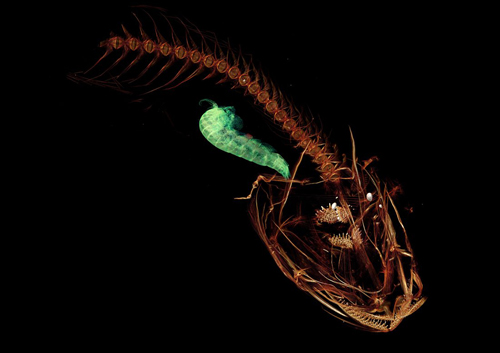
|
这种狮子鱼生活在西太平洋马里亚纳海沟的最深处,身长约0.1米,形状像蝌蚪,却可能是附近海域的头号捕猎者。 |
The swire’s snailfish (Pseudoliparis swirei) lives in the deepest part of the ocean the Mariana Trench in the western Pacific Ocean, where this four-inch tadpole-shaped fish appears to be a top predator. |
7. Sciaphila sugimotoi
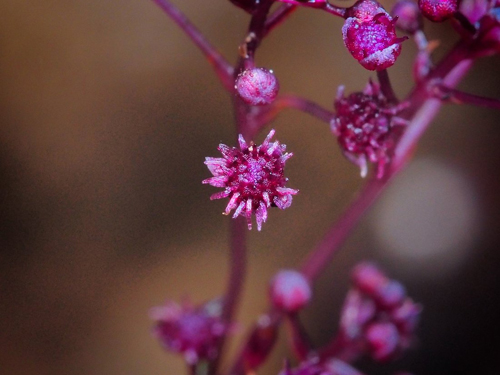
|
Sciaphila sugimotoi直径0.1米,在日本的石恒岛上发现。和大多数通过光合作用维持生存的植物不同,Sciaphila sugimotoi是一种异养生物,也就是说其养分来自其他生物。环境科学与林业科学学院解释说:“这种植物和一种真菌共生,虽然不断吸取营养,但不会造成伤害。” |
This four-inch-high flower is found on Ishigaki Island in Japan. Unlike most plants, which sustain themselves through photosynthesis, Sciaphila sugimotoiis heterotrophic meaning it gets its nutrients from other organisms. “In this case, the plant is symbiotic with a fungus from which it derives nutrition without harm to the partner,” ESF explains. |
8. Thiolava veneris

|
2011年,海底火山Tagoro出现在临近加那利群岛中耶罗岛的海面上,三年后,人们在Tagoro发现了Thiolava veneris 。环境科学与林业科学学院称,这种变形菌门的生物“结构类似头发,由鞘层包裹一些细菌细胞构成。” |
Thiolava veneris was discovered three years after the submarine volcano Tagoro, located off the coast of El Hierro in the Canary Islands, erupted in 2011. This proteobacteria form “long, hair-like structures composed of bacterial cells within a sheath,” according to ESF. |
9.Wakaleo schouteni

|
和上榜的其他物种不同,科学家只在化石里找到了Wakeleo schouteni曾经存在的证据。这种有袋类狮子生活在距今约2300万年前的渐新世晚期,栖息地在澳大利亚昆士兰的西北部地区。 |
Unlike others on this list, scientists only have fossil evidence of the Wakeleo schouteni. Around 23 million years ago, during the late Oligocene era, this marsupial lion roamed in northwestern Queensland, Australia. |
10.丽穴盲步甲
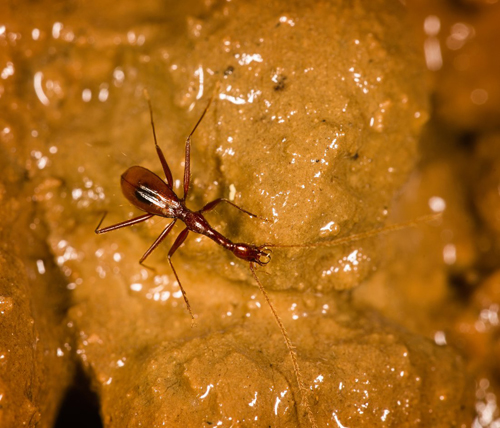
|
这种甲虫能适应黑暗的环境,发现于广西省都安瑶族自治县的一个溶洞中。(财富中文网) 译者:Pessy 审稿:夏林 |
This beetle is adapted to the darkness, and it was discovered in a cave in Du’an, Guangxi Province, China. |













